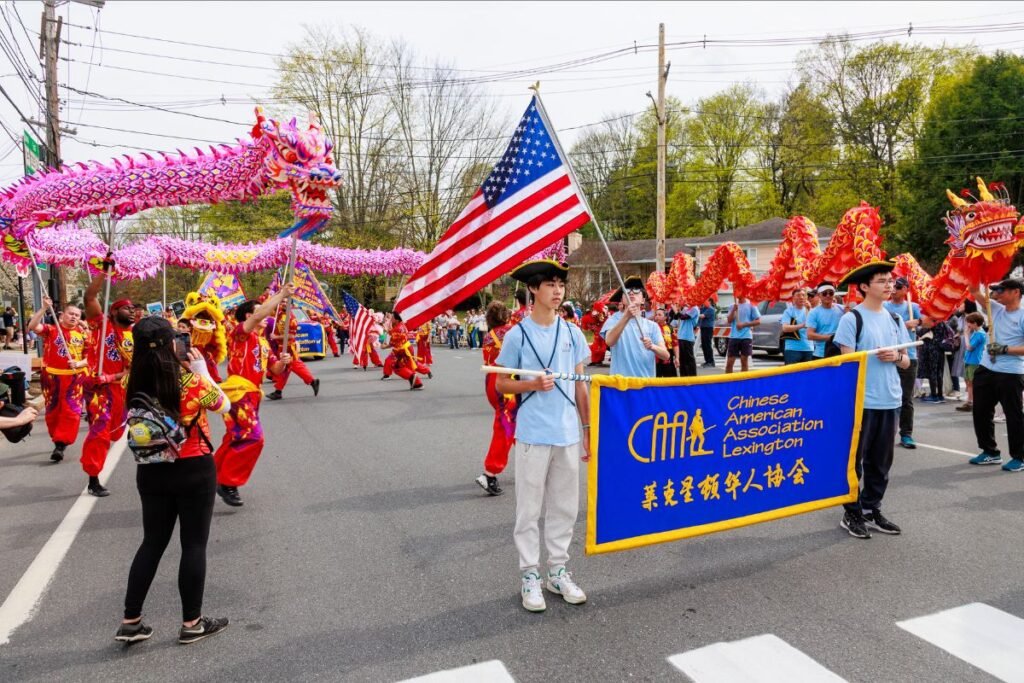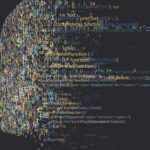
This article is the fourth in an NPQ series titled The New Asian Diaspora Media: Defending Democracy Locally and Globally. Co-produced with Kavitha Rajagopalan, who directs a program on community journalism at the City University of New York (CUNY), this series highlight stories of how different Asian American communities are using grassroots digital media to meet their communities’ need for trustworthy in-language information amid a media environment distorted by rampant disinformation.
It was an ordinary work-from-home day in July 2020 when my coauthor and I published an article about affirmative action for Justice Patch, a then-newly launched WeChat public account, which later became a Chinese-language social justice news website.
Our goal was to debunk a widely circulated falsehood that affirmative action is a quota system and that Chinese Americans would lose 50 percent of college admission slots as a result. We also aimed to provide historical context to this complex and often misunderstood issue.
Conspiracies and false narratives, largely from the political right, now dominate many Chinese-language platforms. Accurate, fact-based information is ever harder to find.
For those unfamiliar, WeChat is a message and social media app used by more than three million Chinese Americans. Since its launch in 2011, it has increasingly become a primary source of news and information for many in the Chinese diaspora.
What happened next shocked us. Within weeks, both my coauthor and I were targets of coordinated online harassment. Angry users opposed to affirmative action dug up our personal details, labeled us traitors to the community, and spread false claims about our motivations.
We knew this topic was controversial. The Atlantic had reported in 2018 on how WeChat helped organize Chinese American opposition to affirmative action. But we didn’t anticipate how vicious the backlash would be. Five years later, attacks from anti-affirmative action Chinese American groups continue. It is attacks like these that have led me to author this article as Piyaoba, the publication name, rather than use my own.
A Disinformation Crisis
The above story is just one piece of a much larger disinformation crisis unfolding within Chinese American digital space. Conspiracies and false narratives, largely from the political right, now dominate many Chinese-language platforms. Accurate, fact-based information is ever harder to find.
Traditionally, in-language “ethnic media” has played a critical role in keeping immigrants with limited English skills informed. But traditional ethnic media outlets—especially local newspapers and TV stations—are often underresourced in adapting to the demands of today’s rapidly changing media landscape and are being outpaced by digital misinformation sources.
Meanwhile, the Chinese American population has grown and changed dramatically. The number of Chinese immigrants in the United States has doubled from 2000 to 2023 to 2.4 million. Many newer immigrants are bilingual, well-educated, and tech-savvy, but they still prefer culturally relevant, Chinese-language platforms such as WeChat, Xiaohongshu, (also known as “Little Red Book”), and other apps over English-language news.
The result? Most Chinese-speaking immigrants either cannot or do not access accurate reporting from English-language outlets. Their media ecosystem centers almost entirely around social media platforms that lack fact-checking, moderation, or transparency.
The Chinese government, for its part, heavily censors WeChat, while other venues like YouTube, Twitter, and Telegram allow Chinese-language content to proliferate with little or no oversight. In this environment, fact-checkers are virtually nonexistent—and misinformation spreads unchecked.
Adding fuel to the fire are powerful political forces funding these disinformation networks. Since 2000, new media outlets with deep ideological ties to the Chinese government or US right-wing funders have taken root in Chinese-language digital spaces.
Fighting disinformation in this environment is daunting—and traditional solutions are often inadequate….However, new tools offer new hope.
Two of the most prominent examples are the Falun Gong-backed Epoch Media Group and GTV Media Group, launched in 2020 by Chinese billionaire Guo Wengui and former Donald Trump strategist Steve Bannon.
The Epoch Times, owned by Epoch Media Group, has become a major amplifier of right-wing narratives. According to NPR, the paper’s revenue skyrocketed from $15.5 million in 2019 to over $70 million in 2020. NPR’s report notes that in June 2024, the outlet’s chief financial officer was charged with laundering at least $67 million in illegally obtained funds. Meanwhile, Guo Wengui was convicted that same year of defrauding his supporters out of nearly $1 billion through GTV Media Group, according to the BBC.
These groups operate websites, produce YouTube videos, and run Chinese-language social media accounts that reach millions. At the same time, disinformation from Chinese state-run media outlets also circulates heavily in Chinese diaspora communities, often reflecting China’s geopolitical interests. When tensions between China and the United States rise, so does the flood of narratives designed to mislead or manipulate Chinese-speaking audiences abroad.
New Tools and Efforts Emerge
Fighting disinformation in this environment is daunting—and traditional solutions are often inadequate. Holding big tech companies accountable for Chinese-language content is difficult. Many ethnic media outlets are struggling to survive and cannot scale up their fact-checking efforts.
However, new tools offer new hope. The rapid development of generative artificial intelligence (AI) presents both challenges and opportunities. One promising project was Co•Insights, an initiative funded by the National Science Foundation from 2021 to 2024, which used AI to detect disinformation proliferating in Asian American communities across multiple platforms and languages. Rather than focusing on fact-checking individual pieces, the project leveraged AI to provide insights into broader narrative themes and patterns.
But AI still needs trustworthy data and community validation to be effective. Co•Insights, for example, relies heavily on human-led, in-language fact-checking. This underscores the urgent need for a new kind of digital community journalism—one that is mobile-friendly, financially accessible, culturally competent, and rooted in local communities.
Despite continued harassment, Piyaoba continues to publish fact-based content on WeChat alongside a small but committed group of Chinese-language writers and fact-checkers. Our work is supported by Chinese for Affirmative Action (CAA), a nonprofit based in San Francisco dedicated to advancing racial and economic justice, education equity, immigrant rights, and language access.
In 2020 and 2021, CAA launched three WeChat channels and a Chinese-language news website Justice Patch, which offers original reporting, curated content, and a fact-checking column. In early 2022, CAA launched Piyaoba (Mandarin for “Let’s fact-check it”)—the first centralized fact-checking portal to combat misinformation and disinformation targeting the Chinese American community.
The majority of the misinformation that Piyaoba debunks originates from constantly monitoring the online content and conversations.
For example, back in 2023, former Fox News host Tucker Carlson interviewed Larry Sinclair, a man who has alleged for years, without evidence, that Barack Obama had sex with him when he was a young politician. Rumors questioning Obama’s sexuality quickly circulated online transitioning from English-language platforms to Chinese-language ones. Fact-checkers at Piyaoba found out that Chinese-language social media influencers on X not only spread misinformation about Obama but they even started claiming that his wife Michelle was a man.
This kind of misinformation sounds (and is) outlandish, but it has been used effectively by right-wing influencers to enhance both anti-LGBTQ+ and anti-Black narratives. Piyaoba fact-checked this story, explained how this misinformation was formed, and shared the fact-checks to WeChat groups. Piyaoba’s article was cited later on when the same misinformation surfaced on X and other Chinese-language online forums.
Since Piyaoba has gained visibility, it has become increasingly common for community members to actively reach out to ask us to fact-check stories. For example, CAA’s front desk received an unusual voice message in July 2024: “Is this WeChat message about Trump’s assassination true or false? Has Piyaoba already fact-checked it?”
It was an unusual message because it was the first time a community member tried to call us. But it was not too surprising given the dramatic surge of disinformation and conspiracy theories in July.
The WeChat message that caller was asking about from someone who described himself as “Jonathan Willis,” who said he was a US Secret Service sniper and, as shown in the screenshot image below, claimed that “100% of the top brass prevented me from killing the assassin before he shot at president Trump.”

It was a false claim already fact-checked by Reuters. It first appeared on the anonymous online message forum 4chan, then on Facebook, then it was translated into Chinese and circulated on X, and, like many other Chinese-language disinformation journeys, once translated on X, it got amplified on WeChat as well.
Piyaoba immediately developed and shared our fact-checking content about this fake news, as well as tips for community members on how to distinguish disinformation.
Fact-Checking Challenges
It would be much easier if all Chinese-language disinformation was merely translated from English and had already been debunked by others.
Unfortunately, much of this disinformation is “original” in Chinese, and very often rooted in history and cultural traumas. For example, misinformation about the protests in the Black Lives Matter movement got twisted as the “American version of the Cultural Revolution.” Critical race theory has also been (mis)labeled as “the American education system trying to start its Cultural Revolution.”
For this kind of misinformation, simple fact-checking is not enough: There is a need for developing deeper educational content, stories, and materials.
The challenge very often is not only the language and cultural barriers, but also significant gaps in understanding of the complex racial and social justice histories of the United States.
Therefore, while continuing to fact-check content, Piyaoba also recruited about a dozen in-language freelance writers and journalists to write educational commentaries and directly publish on CAA’s multiple WeChat public accounts, which reach 45,000 subscribers.
Despite this relatively small audience, Piyaoba’s effort represents an important experiment in building community-powered, in-language journalism.
We’re also seeing other grassroots initiatives take root. For example, a group of young people in New York launched The American Roulette, a Chinese-language podcast that covers US politics; while nonprofits such as Coalition for a Better Chinese American Community (CBCAC) in Chicago and One APIA Nevada have launched their own WeChat information channels.
Importantly, most of these efforts have emerged from the nonprofit sector. The traditional advertising or subscription-based model of journalism simply doesn’t support work dedicated to the public good—especially in communities that have long been underserved and overlooked.
Are these efforts sufficient to handle the disinformation challenges? Perhaps not. But someone has to start somewhere to tackle the “information pollution” issue in the Chinese American and other immigrant communities.
The most effective course of action would be for key stakeholders to address the problem of misinformation. In short, big social media platforms like X and YouTube should take more responsibility to keep misinformation from spreading in the first place.
The need for in-language, community-rooted, digitally accessible journalism is greater than ever.
Policymakers can also develop more effective policies or laws to regulate misinformation. Additionally, mainstream media should invest more in timely fact-checking, and philanthropic support for in-language fact-checking would also be valuable.
In the meantime, groups like Piyaoba do what we can to intervene, call out the lies, and amplify accurate information directly inside the community.
A Global Fight for Information Integrity
Fact-checking work is not getting easier. The rollback of fact-checking efforts by major platforms combined with Trump-era misinformation has intensified the challenges. But the need for in-language, community-rooted, digitally accessible journalism is greater than ever—not just for Chinese Americans, but for the Chinese diaspora across the globe, a community estimated to number close to 50 million people.
Disinformation doesn’t stop at borders. Take the term “zero-dollar shopping”—a racist falsehood suggesting that Black Americans are allowed to shoplift without legal consequences provided the value of what is stolen is under $950. In one article, “Who Is Seeing the Real America,” a journalist from Initium, a Singapore-based international Chinese media outlet, traced how this falsehood traveled across continents. First circulating among US-based Chinese social media platforms, it was then picked up by Chinese state media, amplified in Taiwan, and eventually translated back into English—completing a disturbing global loop of racialized misinformation.
Piyaoba has now labeled this the “No. 1 Chinese-language disinformation narrative in California,” and over the past few years we have published six fact-checking articles debunking the claim.
Disinformation does not just concern digital platforms. It’s a civil rights issue. And the fight for truth in Chinese American spaces must be fought with cultural knowledge, linguistic fluency, grassroots partnerships, and public investment.
The work may be difficult, but it is essential. Because when we protect the truth for our communities, we protect it for everyone.














